The SuperCam Instrument Suite on the NASA Mars 2020 Rover: Body Unit and Combined System Tests
- PMID: 33380752
- PMCID: PMC7752893
- DOI: 10.1007/s11214-020-00777-5
The SuperCam Instrument Suite on the NASA Mars 2020 Rover: Body Unit and Combined System Tests
Abstract
The SuperCam instrument suite provides the Mars 2020 rover, Perseverance, with a number of versatile remote-sensing techniques that can be used at long distance as well as within the robotic-arm workspace. These include laser-induced breakdown spectroscopy (LIBS), remote time-resolved Raman and luminescence spectroscopies, and visible and infrared (VISIR; separately referred to as VIS and IR) reflectance spectroscopy. A remote micro-imager (RMI) provides high-resolution color context imaging, and a microphone can be used as a stand-alone tool for environmental studies or to determine physical properties of rocks and soils from shock waves of laser-produced plasmas. SuperCam is built in three parts: The mast unit (MU), consisting of the laser, telescope, RMI, IR spectrometer, and associated electronics, is described in a companion paper. The on-board calibration targets are described in another companion paper. Here we describe SuperCam's body unit (BU) and testing of the integrated instrument. The BU, mounted inside the rover body, receives light from the MU via a 5.8 m optical fiber. The light is split into three wavelength bands by a demultiplexer, and is routed via fiber bundles to three optical spectrometers, two of which (UV and violet; 245-340 and 385-465 nm) are crossed Czerny-Turner reflection spectrometers, nearly identical to their counterparts on ChemCam. The third is a high-efficiency transmission spectrometer containing an optical intensifier capable of gating exposures to 100 ns or longer, with variable delay times relative to the laser pulse. This spectrometer covers 535-853 nm ( Raman shift relative to the 532 nm green laser beam) with full-width at half-maximum peak resolution in the Raman fingerprint region. The BU electronics boards interface with the rover and control the instrument, returning data to the rover. Thermal systems maintain a warm temperature during cruise to Mars to avoid contamination on the optics, and cool the detectors during operations on Mars. Results obtained with the integrated instrument demonstrate its capabilities for LIBS, for which a library of 332 standards was developed. Examples of Raman and VISIR spectroscopy are shown, demonstrating clear mineral identification with both techniques. Luminescence spectra demonstrate the utility of having both spectral and temporal dimensions. Finally, RMI and microphone tests on the rover demonstrate the capabilities of these subsystems as well.
Keywords: Infrared spectroscopy; Jezero crater; LIBS; Mars; Microphone on Mars; Perseverance rover; Raman spectroscopy; SuperCam.
© The Author(s) 2020.
Conflict of interest statement
Conflicts of interest/Competing interestsThe authors declare that there are no conflicts of interest or competing interests.
Figures
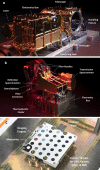






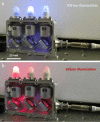






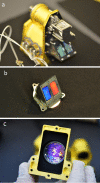
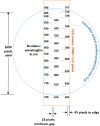










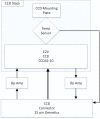








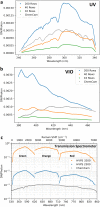



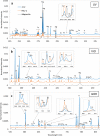
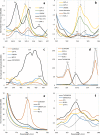












References
-
- Arvidson R.E., Bellutta P., Calef F., Fraeman A.A., Garvin J., Gasnault O., Grant J., Grotzinger J.P., Hamilton V., Heverly M., Iagnemma K.A., Johnson J., Lanza N., Le Mouelic S., Mangold N., Ming D., Mehta M., Morris R.V., Newsom H., Renno N., Rubin D., Schieber J., Sletten R., Vasavada A.R., Vizcaino J., Wiens R.C. J. Geophys. Res., Planets. 2014;119:1322. doi: 10.1002/2013JE004605. - DOI
-
- Barbarand J., Pagel M. Am. Mineral. 2001;86:473.
-
- Bell J., III, Squyres S.W., Herkenhoff K.E., Maki J.N., Arneson H.M., Brown D., Collins S.A., Dingizian A., Elliott S.T., Hagerott E.C., Hayes A.G., Johnson M.J., Johnson J.R., Joseph J., Kinch K., Lemmon M.T., Morris R.V., Scherr L., Schwochert M., Shepard M.K., Smith G.H., Sohl-Dickstein J.N., Sullivan R.J., Sullivan W.T., Wadsworth M. J. Geophys. Res. 2003;108:8063. doi: 10.1029/2003JE002070. - DOI
-
- J. Bell et al. (2020, this journal). 10.1007/s11214-020-00755-x
Publication types
LinkOut - more resources
Full Text Sources
Other Literature Sources
Research Materials
Miscellaneous
